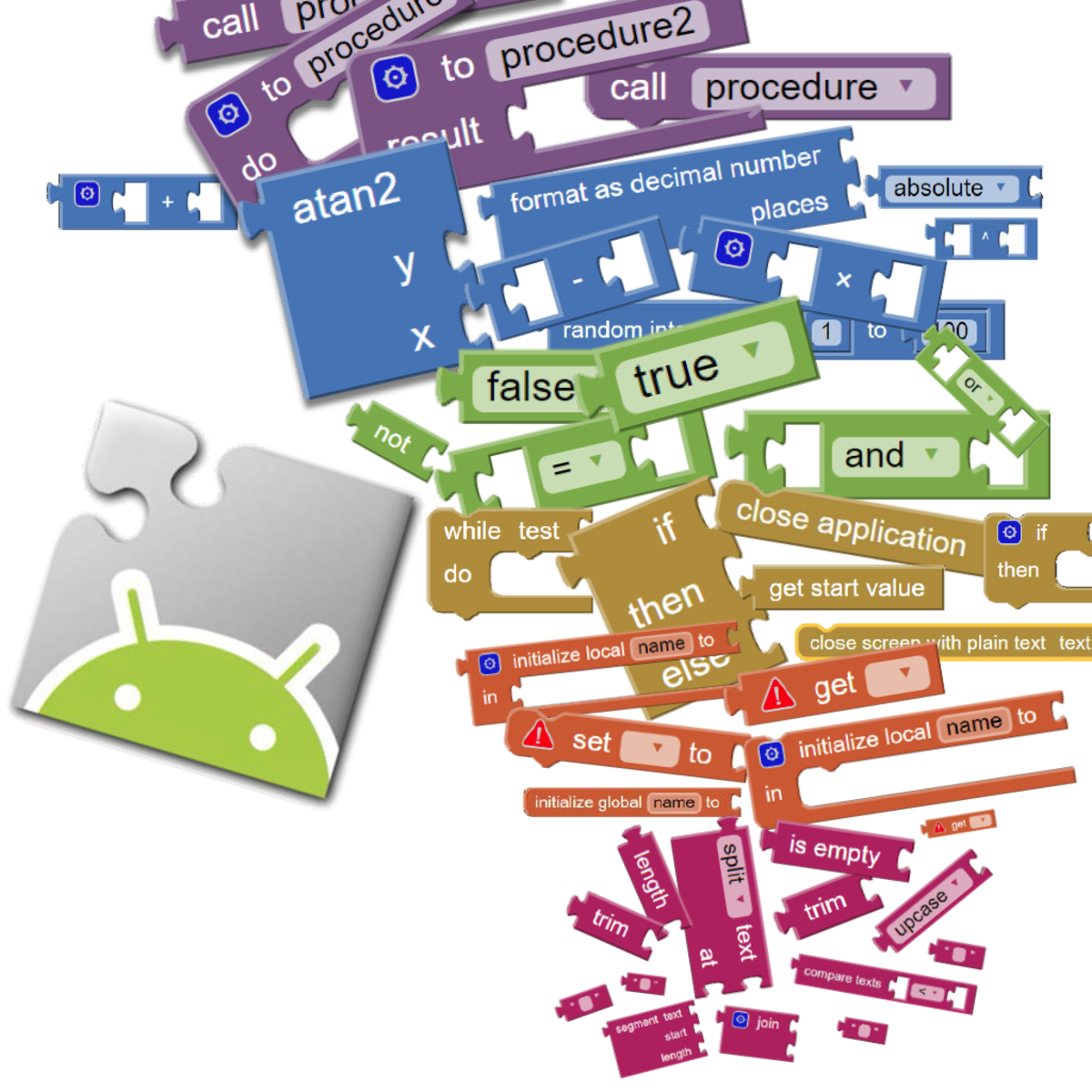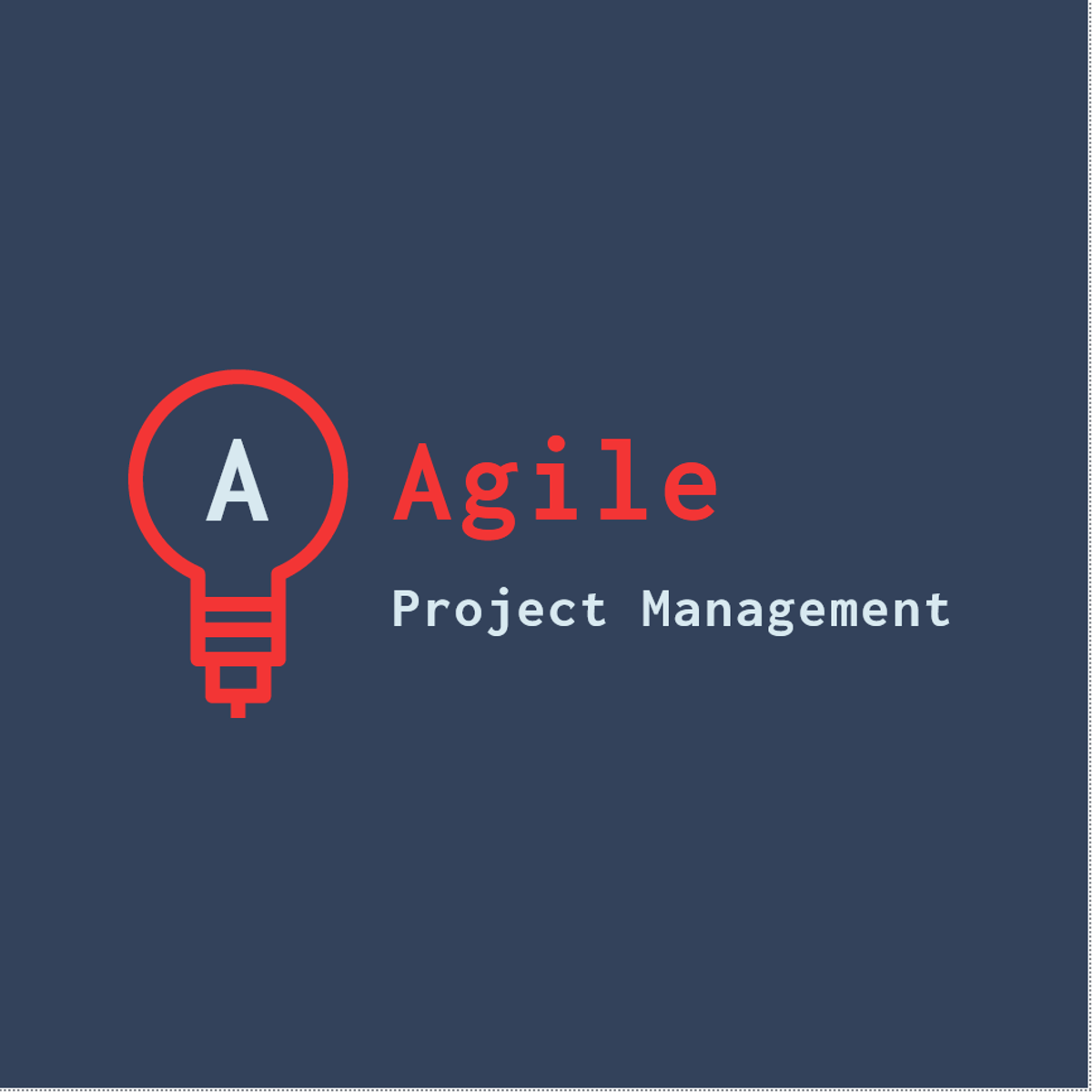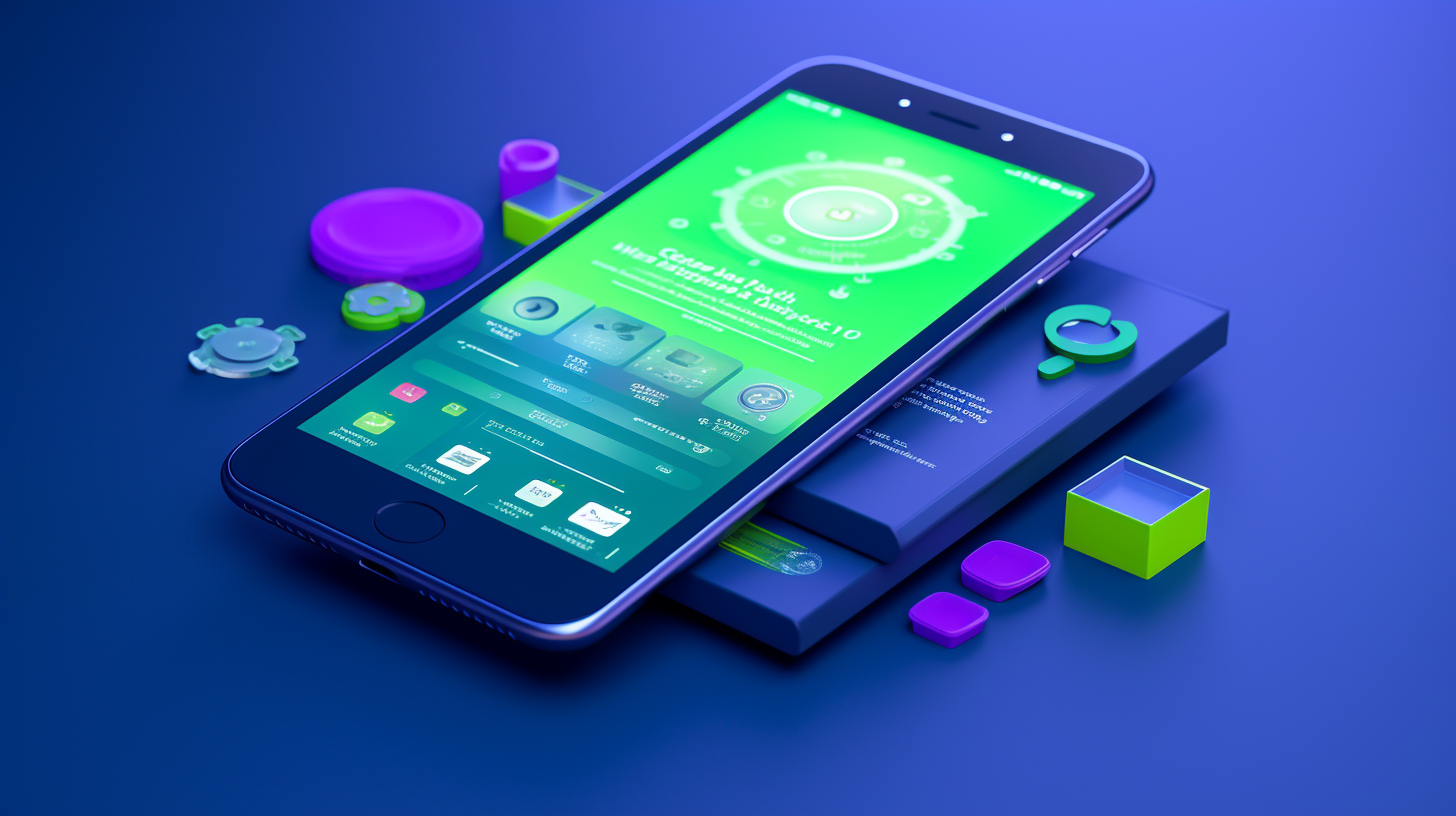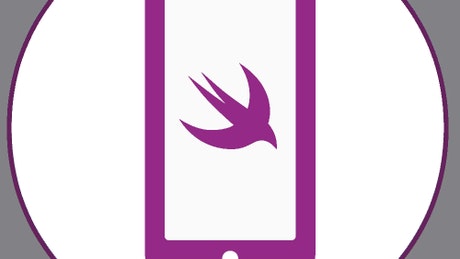Mobile App Development
barking on the Journey of Mobile App Development
Mobile app development is the process of creating software applications that run on mobile devices, such as smartphones and tablets. It involves a range of activities, from conceptualizing and designing the app to coding, testing, and finally deploying it to app stores. In a world increasingly reliant on mobile technology, app development plays a crucial role in how we communicate, shop, learn, and entertain ourselves.
The field is dynamic and constantly evolving, offering exciting opportunities for those who enjoy problem-solving and creating innovative solutions. Imagine building an app that helps people connect with loved ones, streamlines their daily tasks, or even brings a new game to life. The potential to make a tangible impact on users' lives is a significant draw for many aspiring mobile app developers. Furthermore, the collaborative nature of app development, often involving teamwork with designers and other developers, can be a highly rewarding experience.
Introduction to Mobile App Development
This section will lay the groundwork for understanding the world of mobile app development, defining its scope, and exploring its significance in today's digital landscape. We'll touch upon the different types of mobile applications and their relevance, providing a clear starting point for anyone curious about this field.
Definition and scope of mobile app development
At its core, mobile app development is the craft of building software specifically designed to operate on mobile hardware. This encompasses everything from the initial idea and design mock-ups to writing the actual code that makes the app function. It also includes rigorous testing to ensure the app works flawlessly across different devices and operating systems, and finally, the process of publishing the app to platforms like Apple's App Store or Google Play Store.
The scope of mobile app development is vast, covering a multitude of application types. These can range from simple utility apps, like calculators or note-taking tools, to complex enterprise-level applications that manage intricate business processes. Social media platforms, e-commerce storefronts, gaming applications, educational tools, and health and fitness trackers all fall under the umbrella of mobile app development. The field is continuously expanding as new technologies and user needs emerge, making it a constantly evolving and exciting domain.
The reach of mobile apps is truly global, with billions of people using smartphones and downloading apps every day. This widespread adoption means that mobile app developers have the potential to create products that can be used by a massive audience, influencing how people interact with technology and the world around them. OpenCourser allows learners to easily browse through thousands of courses in programming, save interesting options to a list, compare syllabi, and read summarized reviews to find the perfect online course to start their journey.
Key differences between native, hybrid, and web apps
When venturing into mobile app development, it's crucial to understand the different approaches to building applications. The three main categories are native apps, hybrid apps, and web apps, each with its own set of characteristics, advantages, and disadvantages.
Native apps are developed specifically for a particular mobile operating system (OS), such as iOS for Apple devices or Android for devices running Google's OS. This means they are typically written in programming languages and utilize development tools that are native to that platform – for example, Swift or Objective-C for iOS, and Kotlin or Java for Android. Because they are built for a specific OS, native apps can fully leverage the device's features and hardware, often resulting in optimal performance, a responsive user interface, and a seamless user experience that aligns with the platform's design conventions.
Hybrid apps, as the name suggests, combine elements of both native and web applications. They are essentially web apps enclosed in a native "shell." Developers build the core of the hybrid app using web technologies like HTML, CSS, and JavaScript. This core is then wrapped in a native container that allows the app to be installed on a device like a native app and to access some device features. Frameworks like React Native and Flutter are popular for building hybrid apps, enabling developers to write code once and deploy it on multiple platforms, which can save time and resources.
Web apps, or more specifically, Progressive Web Apps (PWAs), are applications that are accessed through a web browser on a mobile device. They are built using standard web technologies and are not installed on the device in the traditional sense, nor are they typically available through app stores. PWAs are designed to be responsive, meaning they adapt to different screen sizes, and can offer features like offline functionality and push notifications, blurring the lines between web pages and installed apps. While they offer broad accessibility across platforms, their access to device hardware and features can be more limited compared to native or hybrid apps.
These courses can help you understand the foundational differences and choose the right path for your app idea.
Importance in modern digital ecosystems
Mobile applications have become an indispensable part of modern digital ecosystems. They serve as primary touchpoints between businesses and consumers, offering unparalleled convenience and accessibility. Think about how often you use an app to order food, manage your finances, connect with friends, or get information – this ubiquity highlights their importance. For businesses, mobile apps are powerful tools for customer engagement, brand building, and driving sales.
In today's mobile-first world, a significant portion of internet traffic and digital media consumption occurs on mobile devices, with apps accounting for the majority of that time. This shift in user behavior means that having a mobile presence is no longer a luxury but a necessity for organizations of all sizes. Apps provide a direct channel for businesses to interact with their audience, offer personalized experiences, and gather valuable user data to improve their products and services.
Furthermore, mobile apps are at the forefront of technological innovation. They are often the first platforms to integrate emerging technologies like artificial intelligence (AI) for personalized experiences, augmented reality (AR) for interactive content, and the Internet of Things (IoT) for connecting with smart devices. This continuous evolution ensures that mobile apps remain central to how we experience the digital world, driving innovation and shaping future technological landscapes. The ability to leverage these technologies through mobile apps opens up new possibilities for businesses to create unique value propositions and stay competitive.
Core Concepts and Methodologies
Understanding the foundational principles and common practices in mobile app development is crucial for anyone looking to enter this field. This section delves into the typical lifecycle of a mobile app, explores different development methodologies, emphasizes the importance of user-centered design, and discusses strategies for reaching users across various platforms.
Software development life cycle (SDLC) for mobile apps
The Software Development Life Cycle (SDLC) for mobile apps is a structured process that outlines the stages involved in creating and maintaining a mobile application. While specific implementations can vary, a typical mobile SDLC includes phases such as planning and requirements gathering, design, development (coding), testing, deployment, and ongoing maintenance and updates. This systematic approach helps ensure that the final product meets user needs and quality standards.
The initial phase, planning and requirements gathering, involves defining the app's purpose, target audience, key features, and overall scope. This is often followed by the design phase, where UI/UX designers create wireframes, mockups, and prototypes to visualize the app's look, feel, and user flow. The development phase is where programmers write the code, translating the design into a functional application. Rigorous testing is then conducted to identify and fix bugs, ensure compatibility across devices, and validate that the app meets the specified requirements. Once the app is deemed ready, it's deployed to app stores for users to download. The lifecycle doesn't end there; post-launch, maintenance involves fixing new bugs, releasing updates with new features, and adapting to OS changes.
Adhering to an SDLC provides numerous benefits, including better project management, improved product quality, cost-efficiency, and enhanced communication among team members. It provides a roadmap for development teams, helping them to deliver high-quality mobile applications in a predictable and organized manner. Understanding the SDLC is fundamental for aspiring mobile app developers, as it provides context for their role within the broader development process.
Agile vs. waterfall methodologies
In mobile app development, as in broader software development, two prominent methodologies for managing projects are Agile and Waterfall. Each offers a different approach to the development process, with distinct advantages and disadvantages.
The Waterfall methodology is a traditional, linear approach where each phase of the SDLC must be completed before the next one begins. It flows sequentially downwards (like a waterfall) through conception, initiation, analysis, design, construction, testing, deployment, and maintenance. This method is characterized by detailed upfront planning and documentation. While it can be effective for projects with clearly defined and stable requirements, its rigidity can be a drawback in the fast-paced world of mobile app development, where requirements often evolve and quick iterations are necessary.
Agile methodologies, on the other hand, embrace flexibility and iterative development. Instead of a single, long development cycle, Agile breaks the project into smaller, manageable cycles called "sprints." Each sprint typically results in a potentially shippable increment of the product. Agile emphasizes collaboration, customer feedback, and rapid adaptation to change. Popular Agile frameworks include Scrum and Kanban. This iterative approach is often well-suited for mobile app development, where user feedback can be incorporated quickly, and features can be released incrementally, allowing for faster time-to-market and continuous improvement.
The choice between Agile and Waterfall (or a hybrid approach) depends on various factors, including the project's complexity, the stability of requirements, team size, and client preferences. However, the dynamic nature of the mobile landscape often makes Agile methodologies a more popular choice for app development projects.
This course provides insights into managing app development projects effectively.
User-centered design principles
User-centered design (UCD) is a foundational philosophy in mobile app development that places the user at the heart of the design and development process. The primary goal of UCD is to create apps that are not only functional but also intuitive, enjoyable, and meet the actual needs and expectations of the target audience. This involves understanding user behaviors, motivations, and pain points through research methods like user interviews, surveys, and usability testing.
Key principles of UCD include early and continuous user involvement throughout the development lifecycle. This means gathering user feedback from the initial concept stage through design, development, and even after launch. Iterative design is another core tenet, where designs are repeatedly tested and refined based on user input. Empathy is also crucial, requiring developers and designers to understand and share the feelings of their users to create solutions that truly resonate. Other important aspects include ensuring clarity in navigation and information architecture, providing consistent design elements, and offering helpful feedback and error prevention mechanisms within the app.
By adhering to UCD principles, development teams can significantly increase the likelihood of creating a successful mobile app that users will find valuable and easy to use. This, in turn, can lead to higher user adoption, engagement, and satisfaction. Neglecting user needs can result in apps that are confusing, frustrating, or simply don't solve the right problems, ultimately leading to poor reviews and low usage.
Understanding user experience is critical, and these courses can provide a strong foundation.
Cross-platform development strategies
Cross-platform development offers a way to build mobile applications that can run on multiple operating systems, primarily iOS and Android, from a single codebase. This approach has gained significant popularity as it can potentially reduce development time and cost compared to building separate native apps for each platform. Several tools and frameworks facilitate cross-platform development, each with its own strengths and trade-offs.
Popular frameworks like React Native (developed by Facebook) and Flutter (developed by Google) allow developers to use a single programming language (JavaScript for React Native, Dart for Flutter) to create apps that have a near-native look and feel on both iOS and Android. These frameworks provide a rich set of pre-built components and tools that streamline the development process. Another approach involves using web technologies (HTML, CSS, JavaScript) within a native wrapper, often referred to as hybrid app development, with tools like Apache Cordova.
While cross-platform development offers efficiency, it's important to consider potential downsides. Performance might not always match that of a truly native app, especially for graphically intensive applications or those requiring deep access to device-specific hardware features. Maintaining a consistent user experience that feels "native" on each platform can also be challenging. However, for many applications, the benefits of faster development and broader reach outweigh these potential drawbacks. The choice of a cross-platform strategy depends on the specific project requirements, budget, timeline, and desired level of native functionality and performance.
These courses offer a deep dive into popular cross-platform frameworks.
You might also find this book on lean mobile app development insightful.Tools and Platforms
Navigating the landscape of mobile app development requires familiarity with the various tools and platforms available. This section will compare the dominant mobile operating systems, introduce popular cross-platform frameworks, discuss backend services, and highlight essential tools for debugging and testing applications. This knowledge is crucial for anyone planning to embark on app development projects.
Comparison of iOS (Swift/Xcode) and Android (Kotlin/Android Studio) ecosystems
The two dominant players in the mobile operating system market are Apple's iOS and Google's Android, each with its own distinct development ecosystem. Developing for iOS typically involves using programming languages like Swift (Apple's modern, powerful, and intuitive language) or its predecessor, Objective-C. The primary integrated development environment (IDE) for iOS development is Xcode, which provides a comprehensive suite of tools for designing, developing, and debugging iOS applications. The iOS ecosystem is known for its curated App Store, stringent review guidelines, and a generally more affluent user base, which can influence monetization strategies.
On the other side, Android development primarily utilizes Kotlin (a modern, concise, and safe programming language officially supported by Google) or Java. The official IDE for Android development is Android Studio, built on JetBrains' IntelliJ IDEA software. Android is an open-source platform, offering greater flexibility and customization options for developers and device manufacturers. The Google Play Store is the primary distribution platform for Android apps, known for its larger global market share and a more open publishing process compared to Apple's App Store.
Choosing between iOS and Android development (or deciding to develop for both) depends on factors like target audience, geographical reach, project requirements, and monetization goals. Both platforms offer robust tools and extensive documentation, and have large, active developer communities. Many developers choose to specialize in one platform, while others learn to develop for both or utilize cross-platform solutions.
These courses provide an excellent starting point for learning native iOS or Android development.
For those interested in the foundational languages, these books are highly recommended.Cross-platform frameworks: Flutter, React Native
Cross-platform frameworks have revolutionized mobile app development by enabling developers to write code once and deploy it on multiple operating systems, primarily iOS and Android. This approach can significantly save time and resources compared to building separate native applications for each platform. Among the most popular cross-platform frameworks are Google's Flutter and Facebook's React Native.
Flutter uses the Dart programming language and is known for its rich set of customizable widgets, expressive UI capabilities, and excellent performance, often approaching native speed. Flutter's "hot reload" feature allows developers to see the effects of code changes almost instantly, speeding up the development and iteration process. It compiles to native ARM code, contributing to its performance advantages. React Native, on the other hand, utilizes JavaScript and React, a popular web development library. This makes it an attractive option for web developers looking to transition into mobile development. React Native allows developers to build user interfaces using native UI components, providing a look and feel that is consistent with the target platform. It also has a large and active community, offering a wealth of third-party libraries and support.Other cross-platform tools include .NET MAUI, which allows C# developers to build native apps for multiple platforms. The choice of a cross-platform framework often depends on factors like the development team's existing skill set, specific project requirements regarding performance and native feature access, and the desired level of UI customization.
If you're interested in diving into these frameworks, consider these comprehensive courses:
You may also find these topics interesting if you want to explore further.Backend-as-a-Service (BaaS) platforms
Backend-as-a-Service (BaaS) platforms provide mobile app developers with pre-built backend infrastructure and services, simplifying and accelerating the development process. Instead of building and managing their own server-side components, developers can leverage BaaS solutions for common functionalities like cloud storage, databases, user authentication, push notifications, and APIs. This allows developers to focus more on the frontend user experience and app logic, rather than backend complexities.
Popular BaaS providers include Firebase (Google), AWS Amplify (Amazon Web Services), and Microsoft Azure Mobile Apps. These platforms offer a wide array of tools and services that can be easily integrated into mobile applications. For example, Firebase provides features like Realtime Database, Firestore (a NoSQL document database), Authentication, Cloud Functions (for serverless backend code), and Cloud Messaging (for push notifications).
Using a BaaS platform can significantly reduce the time and effort required to build and scale the backend of a mobile app. It can be particularly beneficial for startups and individual developers with limited resources or backend expertise. BaaS solutions also often handle aspects like server maintenance, scaling, and security, relieving developers of these operational burdens. However, it's important to consider potential vendor lock-in and limitations in customization when choosing a BaaS provider.
These courses demonstrate how to integrate BaaS platforms like Firebase into your mobile apps.
Exploring databases further can enhance your backend development skills.Essential debugging and testing tools
Debugging and testing are critical stages in the mobile app development lifecycle, ensuring that the application is functional, reliable, and provides a good user experience. Developers rely on a variety of tools to identify and fix errors (bugs) in their code and to test the app's behavior across different devices and scenarios.
Integrated Development Environments (IDEs) like Xcode for iOS and Android Studio for Android come with powerful built-in debuggers. These tools allow developers to step through their code line by line, inspect variables, set breakpoints, and analyze the app's runtime behavior to pinpoint the source of issues. Logging frameworks are also essential, enabling developers to record events and variable states during execution, which can be invaluable for diagnosing problems that are difficult to reproduce.
For testing, developers use a combination of manual and automated testing approaches. Manual testing involves human testers interacting with the app to find bugs and assess usability. Automated testing tools, such as XCTest for iOS and Espresso for Android, allow developers to write scripts that automatically execute test cases, verifying that different parts of the app function as expected. Performance testing tools help identify bottlenecks and optimize app speed and responsiveness. Emulators and simulators allow testing on a wide range of virtual devices, while testing on real physical devices is crucial for catching hardware-specific issues. Cloud-based device farms also offer access to a vast array of real devices for comprehensive testing.
Understanding how to publish and test apps is a key skill for any mobile developer.
This book provides a comprehensive guide to mobile app testing. You may also find these topics relevant.Career Pathways in Mobile App Development
The field of mobile app development offers diverse and rewarding career opportunities, with paths ranging from entry-level positions to senior leadership roles. Whether you're drawn to the flexibility of freelancing or the structure of corporate employment, understanding the career landscape is essential for aspiring and established developers alike. This section explores various roles, employment models, emerging specializations, and salary expectations in this dynamic industry.
Entry-level roles vs. senior positions
The career ladder in mobile app development typically begins with entry-level or junior developer roles. In these positions, individuals usually work under the guidance of more experienced developers, focusing on tasks like writing and debugging code for specific features, implementing UI elements based on designs, and participating in testing. Junior developers gain hands-on experience with programming languages, development tools, and team collaboration. The emphasis is on learning and contributing to smaller parts of larger projects.
As developers gain experience and demonstrate proficiency, they can advance to mid-level and then senior developer positions. Senior mobile developers take on more complex responsibilities, including designing app architecture, leading development efforts for significant features or entire applications, mentoring junior developers, and making critical technical decisions. They are expected to have a deep understanding of their chosen platform(s), be proficient in various development methodologies, and possess strong problem-solving skills.
Further progression can lead to roles like Lead Mobile Developer or Mobile Architect, involving more strategic responsibilities such as setting technical direction, managing development teams, and overseeing the overall architecture of mobile solutions. Some senior developers may also choose to specialize in niche areas or transition into management roles. The journey from an entry-level to a senior position is marked by continuous learning, skill development, and a proven track record of delivering successful mobile applications.
Freelancing vs. corporate employment dynamics
Mobile app developers have the option to pursue their careers either as freelancers or as employees within a corporate setting, each path offering distinct advantages and challenges. Freelancing provides a high degree of autonomy and flexibility, allowing developers to choose their projects, set their own hours, and often work remotely. Freelancers typically manage their own business affairs, including finding clients, negotiating contracts, and handling invoicing. This path can be appealing for those who are self-motivated, enjoy variety, and possess good entrepreneurial skills.
Corporate employment, on the other hand, offers more stability, a predictable income stream, and often comes with benefits such as health insurance, retirement plans, and paid time off. Working within a company, developers are usually part of a larger team, which can provide opportunities for mentorship, collaboration, and career advancement within the organizational structure. Corporate roles might involve working on larger, long-term projects and contributing to the company's broader strategic goals.
The choice between freelancing and corporate employment often depends on individual preferences, career goals, and risk tolerance. Some developers may even transition between these models at different stages of their careers. The demand for mobile app developers is strong in both sectors, providing ample opportunities regardless of the chosen employment dynamic. Many find success and fulfillment in either path, or even a hybrid approach.
For those considering the business side of app development, these courses offer valuable insights.
This book can also be a helpful resource for aspiring app entrepreneurs. Consider exploring these related careers if you're interested in the business or design aspects.Emerging specialization areas (AR/VR, IoT integration)
The field of mobile app development is constantly evolving, with new technologies creating exciting specialization areas. Augmented Reality (AR) and Virtual Reality (VR) are increasingly being integrated into mobile apps, offering immersive experiences for gaming, education, retail, and more. Developers specializing in AR/VR for mobile focus on creating interactive 3D environments and overlaying digital information onto the real world through smartphone cameras and sensors.
Another rapidly growing specialization is the integration of the Internet of Things (IoT) with mobile applications. As more everyday devices become connected to the internet – from smart home appliances and wearables to industrial sensors – mobile apps serve as the primary interface for controlling and interacting with these IoT devices. IoT mobile app developers work on creating seamless connections between apps and a diverse range of hardware, managing data streams, and ensuring security.
Other emerging areas include mobile app development for wearable technology (like smartwatches and fitness trackers), AI and Machine Learning integration for creating intelligent and personalized app experiences, and developing apps that leverage the capabilities of 5G technology for enhanced speed and connectivity. Specializing in these cutting-edge areas can open up new career opportunities and allow developers to work on innovative projects at the forefront of technology. Continuous learning is key to staying relevant in these fast-paced specializations.
These courses can introduce you to some of these exciting emerging fields.
For a deeper dive, consider this book on mobile app development with Ionic.Salary benchmarks across regions
Salaries for mobile app developers can vary significantly based on several factors, including geographic location, years of experience, specialization, and the specific technologies they are proficient in. Generally, regions with a high cost of living and a strong tech industry presence tend to offer higher salaries.
In North America, particularly in major tech hubs in the United States like San Francisco, New York, and Seattle, mobile app developers can command some of the highest salaries globally. For instance, senior app developers in the US can earn well over $100,000 annually, with some reaching $150,000 or more. Canada also offers competitive salaries, though typically somewhat lower than in the US.
Western European countries such as Switzerland, the UK, Germany, and the Netherlands also offer attractive compensation packages for mobile developers. Switzerland, for example, often has salaries comparable to or even exceeding those in some US tech hubs. In contrast, salaries in Eastern Europe, Asia (with exceptions like Singapore), and Latin America tend to be lower, although the cost of living in these regions is often correspondingly lower as well. For example, countries like India and Ukraine offer a more cost-effective workforce for app development, which is a factor for companies outsourcing development. It's important to research specific city and country data, as even within a region, salaries can differ substantially. Experience level plays a major role, with senior developers earning significantly more than junior or mid-level professionals across all regions.
It's also worth noting that developers specializing in high-demand areas like iOS or specific emerging technologies might command higher salaries. Resources like Glassdoor, Payscale, and industry-specific salary surveys can provide more detailed and up-to-date information on salary benchmarks.
Formal Education Pathways
For those considering a career in mobile app development, formal education can provide a strong foundation in computer science principles, software engineering practices, and specialized mobile technologies. This section explores relevant degree programs, the role of capstone projects, industry partnerships, and research frontiers in mobile computing.
Relevant undergraduate/graduate degrees
A common educational pathway into mobile app development is through an undergraduate degree in Computer Science, Software Engineering, or a closely related field. These programs typically provide a broad understanding of fundamental concepts such as data structures, algorithms, operating systems, programming languages, and software development methodologies. Such foundational knowledge is highly transferable and valuable for aspiring mobile app developers.
Some universities may offer specialized tracks or courses within these degrees focusing specifically on mobile application development, covering topics like iOS or Android development, mobile UI/UX design, and cross-platform development tools. Other relevant degree programs could include Computer Applications Development or even Mathematics, particularly for roles that involve complex algorithms or data analysis within apps.
For those seeking more advanced knowledge or wishing to pursue research or specialized roles, a graduate degree (Master's or Ph.D.) in Computer Science or Software Engineering with a focus on mobile computing can be beneficial. These programs often delve deeper into advanced topics, research methodologies, and emerging technologies in the mobile space. While a degree is not always a strict requirement for entry-level positions, particularly if a candidate has a strong portfolio of projects, a formal education can provide a competitive edge and a more comprehensive theoretical understanding.
Capstone projects and thesis opportunities
Capstone projects and thesis work within undergraduate or graduate programs offer invaluable opportunities for students to apply their knowledge to real-world mobile app development challenges. These projects often serve as a culmination of their studies, allowing them to design, develop, and deploy a significant mobile application, either individually or as part of a team. This hands-on experience is highly regarded by potential employers.
For a capstone project, students might identify a problem and propose a mobile app solution, going through the entire development lifecycle from requirements gathering and design to implementation, testing, and presentation. This could involve building an app for a specific industry, a utility app, an educational tool, or a game. Such projects allow students to showcase their technical skills, problem-solving abilities, and project management capabilities.
At the graduate level, a thesis might involve more in-depth research into a specific area of mobile computing. This could range from exploring new algorithms for mobile performance optimization, investigating novel user interaction techniques for mobile devices, developing new security protocols for mobile applications, or researching the impact of emerging technologies like AR/VR or IoT on mobile experiences. These research-intensive projects contribute to the advancement of the field and can pave the way for careers in research or specialized development roles.
These courses offer a glimpse into capstone projects, which are common in formal education.
University-industry partnership programs
University-industry partnership programs play a significant role in bridging the gap between academic learning and the practical demands of the mobile app development industry. These collaborations can take various forms, including internships, co-op programs, sponsored research projects, guest lectures by industry professionals, and joint curriculum development. Such partnerships provide students with valuable real-world experience, exposure to industry best practices, and networking opportunities.
Internships and co-op programs allow students to work directly within companies on mobile app development projects, applying their classroom knowledge in a professional setting. This hands-on experience is crucial for skill development and can often lead to full-time job offers upon graduation. Sponsored research projects enable students and faculty to collaborate with industry partners on solving specific technological challenges, often leading to innovative solutions and publications.
Guest lectures and workshops delivered by industry experts bring current industry trends and insights directly into the classroom, enriching the academic curriculum. Furthermore, when universities collaborate with industry to develop or update curricula, it helps ensure that graduates are equipped with the skills and knowledge that are most relevant to the current job market. These partnerships are mutually beneficial, providing students with enhanced learning experiences and career prospects, while industry partners gain access to emerging talent and cutting-edge research.
PhD research frontiers in mobile computing
For individuals passionate about pushing the boundaries of mobile technology, pursuing a Ph.D. in mobile computing offers the opportunity to engage in cutting-edge research. Doctoral research in this field explores a wide array of advanced topics aimed at shaping the future of mobile applications and experiences. These research frontiers often tackle complex challenges and explore innovative solutions that can have a significant impact on the industry and society.
Current PhD research areas in mobile computing include, but are not limited to: advanced AI and machine learning algorithms for mobile devices, focusing on on-device intelligence, federated learning, and resource-efficient AI. Another active area is the development of novel interaction paradigms for emerging mobile form factors, such as foldable devices, wearables, and AR/VR headsets. Security and privacy in mobile environments remain a critical research focus, exploring new cryptographic techniques, privacy-preserving data analytics, and robust defenses against evolving mobile threats.
Other research frontiers involve optimizing mobile systems for energy efficiency, improving the performance and scalability of mobile cloud computing, developing next-generation wireless communication protocols for mobile networks (beyond 5G), and exploring the ethical and societal implications of pervasive mobile technologies. PhD candidates in mobile computing contribute to the body of knowledge through rigorous research, experimentation, and publication, often collaborating with industry partners on groundbreaking projects. Their work helps drive innovation and lays the foundation for future advancements in mobile app development.
Self-Directed Learning Strategies
While formal education provides a structured path, many successful mobile app developers have honed their skills through self-directed learning. This approach offers flexibility and allows individuals to learn at their own pace, focusing on areas that most interest them. This section outlines effective strategies for those charting their own course in mobile app development, from building foundational skills to creating a compelling portfolio.
Building foundational programming skills
Before diving into the specifics of mobile app development, establishing a strong foundation in general programming concepts is essential. This includes understanding core principles like data types, variables, control structures (loops and conditionals), functions, object-oriented programming (OOP) concepts (classes, objects, inheritance, polymorphism), and basic data structures and algorithms. These fundamentals are transferable across different programming languages and platforms.
For aspiring mobile app developers, starting with a widely used language relevant to their target platform or chosen framework is a good strategy. For instance, if aiming for Android native development, learning Kotlin or Java is crucial. For iOS native development, Swift is the primary language. If considering cross-platform development with Flutter, learning Dart is necessary, while React Native requires proficiency in JavaScript. Many online platforms offer introductory programming courses that can help build these foundational skills. OpenCourser, for example, provides a vast catalog of courses from various providers, making it easy to find resources tailored to your learning style and goals.
Beyond just learning the syntax of a language, it's important to practice problem-solving and logical thinking. Working on small coding exercises, participating in coding challenges, and trying to build simple command-line applications can help solidify these foundational skills. A solid understanding of programming fundamentals will make the journey into the more specialized aspects of mobile app development much smoother and more effective.
These courses are excellent for building those crucial foundational programming skills.
These books are considered classics for learning core programming concepts. You may also find these topics helpful for a broader understanding.Open-source project contributions
Contributing to open-source projects is an excellent way for self-directed learners to gain practical experience, collaborate with other developers, and build a portfolio. Many mobile app development tools, frameworks, libraries, and even full applications are open-source, meaning their codebase is publicly available and developers can contribute to their improvement.
Getting started with open-source contributions can seem daunting, but many projects welcome newcomers and offer guidance. Platforms like GitHub host a vast number of open-source projects. You can start by looking for projects related to the mobile platforms or technologies you are learning. Many projects label issues as "good first issue" or "help wanted," which are specifically aimed at new contributors. Contributions can range from fixing bugs and improving documentation to adding new features or translating content.
Participating in open-source projects provides exposure to real-world codebases, development workflows (like version control with Git and code review processes), and collaboration with a diverse community of developers. It's a fantastic opportunity to learn from more experienced developers, get feedback on your code, and build a reputation within the developer community. These contributions can also be highlighted on your resume or portfolio, demonstrating your skills and initiative to potential employers.
Creating portfolio-worthy personal projects
For self-directed learners, creating personal projects is arguably one of the most important activities for mastering mobile app development and showcasing abilities to potential employers or clients. A strong portfolio of well-executed personal projects can speak volumes about your skills, creativity, and passion for development, often outweighing traditional credentials.
Start with ideas that genuinely interest you or aim to solve a problem you or others face. This intrinsic motivation will help you stay engaged throughout the development process. Begin with simpler projects to build confidence and gradually tackle more complex applications as your skills grow. For example, you could start by building a to-do list app, a weather app, a simple game, or a utility that automates a task you frequently perform.
Focus on completing these projects from start to finish – from conceptualization and design to coding, testing, and even publishing them to app stores if possible. Document your development process, the challenges you faced, and the solutions you implemented. Using version control systems like Git and hosting your projects on platforms like GitHub is also highly recommended, as it allows others to see your code and your development history. A portfolio of diverse and polished personal projects is a powerful asset in the job market for mobile app developers.
Consider these courses that guide you through building complete applications, perfect for your portfolio.
Participating in developer communities
Engaging with developer communities is an invaluable resource for self-directed learners in mobile app development. These communities, whether online forums, local meetups, or social media groups, provide a platform for learning, sharing knowledge, asking questions, and networking with fellow developers. They can offer support, inspiration, and a sense of belonging, which is particularly important when learning independently.
Online platforms like Stack Overflow, Reddit (e.g., r/androiddev, r/iosdev, r/flutterdev), GitHub discussions, and dedicated Discord or Slack channels for specific technologies are excellent places to seek help with coding problems, discuss new trends, and learn from the experiences of others. Don't be afraid to ask questions, but also try to contribute by answering questions where you can – teaching others is a great way to solidify your own understanding.
Attending local developer meetups, conferences (many offer online access too), and hackathons can provide opportunities for in-person networking, learning about new tools and techniques directly from experts, and collaborating on projects. Building relationships within the developer community can lead to mentorship opportunities, job referrals, and collaborations on future projects. Actively participating in these communities can significantly accelerate your learning journey and help you stay motivated and connected in the ever-evolving world of mobile app development. Learners can find more tips and guidance in the OpenCourser Learner's Guide, which offers articles on how to structure self-learning and stay disciplined.
Ethical and Privacy Considerations
As mobile applications become increasingly integrated into our daily lives, collecting and processing vast amounts of personal data, ethical considerations and privacy concerns have taken center stage. Developers and organizations have a responsibility to design and build apps in a way that respects user privacy, ensures data security, and promotes ethical practices. This section explores some of the key ethical and privacy challenges in mobile app development.
Data collection and GDPR compliance
Mobile applications often collect a wide range of user data, from basic personal information and location data to usage patterns and device identifiers. While this data can be used to personalize experiences, improve services, and provide valuable insights, it also raises significant privacy concerns. Users are increasingly aware of and concerned about how their data is being collected, used, and shared.
Regulations like the General Data Protection Regulation (GDPR) in Europe have set stringent rules for data collection, processing, and consent. GDPR, for example, requires organizations to obtain explicit consent from users before collecting their data, to be transparent about how data is used, to provide users with the right to access and delete their data, and to implement appropriate security measures to protect data. Similar data privacy laws are emerging in other regions worldwide.
Mobile app developers must be knowledgeable about these regulations and design their apps with privacy in mind from the outset (a concept known as "privacy by design"). This includes minimizing data collection to only what is necessary, anonymizing or pseudonymizing data where possible, providing clear and concise privacy policies, and implementing robust security measures to prevent data breaches. Failure to comply with data protection regulations can result in hefty fines and damage to an organization's reputation.
Addiction mechanics in app design
A growing ethical concern in mobile app development revolves around the intentional design of "addiction mechanics" or "persuasive technology" aimed at maximizing user engagement, often to the detriment of user well-being. These mechanics can include features like variable reward schedules (similar to slot machines), push notifications designed to constantly draw users back, social validation loops (likes, comments), and gamification elements that encourage compulsive use.
While user engagement is a desirable outcome for app developers and businesses, there's a fine line between creating an enjoyable, engaging experience and fostering unhealthy, addictive behaviors. Excessive app usage can lead to issues like decreased productivity, social isolation, sleep deprivation, and mental health problems. The ethical debate centers on the responsibility of developers and companies to prioritize user well-being over maximizing screen time and ad revenue.
Ethical app design encourages transparency about how these mechanics work, providing users with more control over notifications and usage, and designing experiences that support healthy habits rather than exploiting psychological vulnerabilities. There's a growing movement towards "humane tech" and "digital well-being" features, both at the operating system level (e.g., screen time management tools) and within individual apps, reflecting a greater awareness of these ethical challenges.
Accessibility standards implementation
Ensuring that mobile applications are accessible to people with disabilities is a critical ethical consideration and, in many jurisdictions, a legal requirement. Mobile app accessibility means designing and developing apps so that they can be used effectively by everyone, regardless of their auditory, cognitive, motor, or visual impairments. This includes users who rely on assistive technologies such as screen readers, voice control, or switch access.
Implementing accessibility standards involves adhering to guidelines like the Web Content Accessibility Guidelines (WCAG), which, while originally focused on web content, provide a strong framework for mobile app accessibility. Key considerations include providing text alternatives for non-text content (e.g., alt text for images), ensuring sufficient color contrast, making all functionality available from a keyboard (or equivalent for touch devices), providing clear and consistent navigation, and ensuring that apps are compatible with assistive technologies.
Designing for accessibility not only expands the potential user base of an app but also often results in a better user experience for everyone. For example, clear visual hierarchies and captions for videos benefit all users, not just those with specific disabilities. Prioritizing accessibility demonstrates a commitment to inclusivity and ethical design, ensuring that the benefits of mobile technology are available to the widest possible audience.
This course touches upon important aspects of user experience, which includes accessibility.
Security best practices
Security is a paramount concern in mobile app development, as apps often handle sensitive user data, including personal information, financial details, and private communications. A security breach can lead to severe consequences, including financial loss, identity theft, reputational damage for the app provider, and loss of user trust. Therefore, adhering to security best practices throughout the development lifecycle is crucial.
Key security best practices include secure coding practices to prevent common vulnerabilities like injection attacks, cross-site scripting (XSS), and insecure data storage. Implementing strong authentication and authorization mechanisms is essential to ensure that only legitimate users can access their data and app functionalities. Data encryption, both in transit (e.g., using HTTPS) and at rest (when stored on the device or server), is vital for protecting sensitive information.
Regular security testing, including penetration testing and vulnerability scanning, helps identify and address potential weaknesses before they can be exploited. Keeping software and third-party libraries up to date is also important, as updates often include patches for known security vulnerabilities. Developers should also be mindful of permissions requested by the app, asking only for those that are strictly necessary for the app's functionality, and providing clear explanations to users about why these permissions are needed. Educating users about safe practices, such as using strong passwords and being wary of phishing attempts, can also contribute to overall app security.
For those looking to delve deeper into app security and related topics, consider exploring the Cybersecurity category on OpenCourser.
You might also find these topics relevant.Market Trends and Economic Impact
The mobile app market is a dynamic and rapidly expanding sector of the global economy, characterized by significant revenue generation, evolving user adoption patterns, and the continuous influence of technological advancements. Understanding these market trends is crucial for developers, entrepreneurs, and investors looking to navigate and succeed in this competitive landscape.
Global app revenue projections
The global mobile app market generates substantial revenue, with projections indicating continued strong growth. In 2023, the market was already valued at hundreds of billions of dollars, with some estimates suggesting figures around $195.7 billion and projected to reach approximately $606.1 billion by 2032. Other reports project even higher figures, with expectations of mobile app revenue reaching $935 billion. Consumer spending in mobile apps reached $133 billion in 2021, a nearly 20% increase from 2020. Projections suggest that global user spending will continue to climb, potentially generating $186 billion by 2027.
This revenue is primarily generated through in-app purchases, premium app sales, subscriptions, and in-app advertising. While mobile games have traditionally accounted for a significant portion of app revenue, there's a noticeable shift with increasing spending on non-game apps, particularly in categories like entertainment (especially short-form video), photo and video editing, and productivity. The App Store generally sees higher overall consumer spending compared to Google Play, although both platforms are experiencing growth. The continued growth in app revenue underscores the immense economic opportunities within the mobile app ecosystem for developers and businesses that can create engaging and valuable mobile experiences.
Emerging markets adoption rates
While mature markets like North America and Europe have high smartphone penetration and app usage, emerging markets are playing an increasingly crucial role in the global growth of the mobile app industry. Countries in regions like Southeast Asia, Latin America, and Africa are experiencing rapid smartphone adoption, driven by more affordable devices and expanding internet connectivity. This surge in new smartphone users is creating vast new audiences for mobile applications.
For instance, Asia-Pacific, driven by countries like China and India, already accounts for a massive volume of app downloads and usage. India, in particular, has seen significant growth in new smartphone users and app installs. Emerging markets often exhibit "leapfrogging" behavior, where populations adopt mobile technologies directly, sometimes bypassing older technologies like desktop computers for internet access. This makes mobile apps even more central to their digital lives.
Developers and businesses are increasingly focusing on these emerging markets, tailoring apps to local languages, cultural preferences, and specific needs. Monetization strategies may also differ, with a greater emphasis on ad-supported models or lower price points for in-app purchases in some regions. The growth in these markets presents significant opportunities for app developers to reach new users and contribute to digital inclusion.
Impact of 5G and foldable devices
Two significant technological advancements poised to reshape the mobile app development landscape are the rollout of 5G technology and the increasing availability of foldable devices. 5G, the fifth generation of mobile network technology, promises significantly faster download and upload speeds, lower latency, and greater network capacity compared to 4G. This will enable richer, more interactive, and data-intensive mobile app experiences. For example, 5G can enhance streaming quality for video and gaming apps, support more responsive AR/VR experiences, and improve the performance of IoT applications that rely on real-time data transfer. Developers will need to optimize their apps to take full advantage of 5G's capabilities.
Foldable devices, such as smartphones that can unfold into tablet-sized screens, present new opportunities and challenges for app design and development. Apps will need to seamlessly adapt their layouts and user interfaces to different screen sizes and orientations as devices are folded and unfolded. This offers the potential for enhanced multitasking, richer content consumption, and innovative user experiences. Developers will need to consider these new form factors in their design and testing processes to ensure a smooth user experience. Both 5G and foldable devices are driving innovation and pushing developers to think creatively about the future of mobile applications.
These courses and topics can help you explore specific areas of mobile app development and market trends.
Venture capital investment patterns
Venture capital (VC) investment plays a crucial role in fueling innovation and growth within the mobile app development ecosystem, particularly for startups. Investment trends can provide insights into which app categories and technologies are currently attracting the most attention and perceived as having high growth potential. VC funding enables startups to scale their operations, develop their products, and expand their market reach.
Historically, VC investment in mobile apps has ebbed and flowed across different sectors. There have been periods of intense interest in areas like social networking, gaming, e-commerce, and on-demand services. More recently, areas like FinTech (financial technology), EdTech (education technology), HealthTech (health technology), and apps leveraging AI, AR/VR, and blockchain have garnered significant investor interest. The COVID-19 pandemic, for example, accelerated investment in remote work tools, e-learning platforms, and telehealth applications.
Investors typically look for apps with a strong value proposition, a large addressable market, a scalable business model, and a talented team. While Silicon Valley remains a major hub for VC investment, funding is increasingly global, with significant activity in other regions like Asia and Europe. Emerging markets are also seeing increased VC interest as their mobile ecosystems mature. Keeping an eye on VC investment patterns can help developers and entrepreneurs identify promising niches and understand the broader market sentiment.
Future of Mobile App Development
The landscape of mobile app development is in a perpetual state of evolution, driven by rapid technological advancements and shifting user expectations. Looking ahead, several key trends are poised to significantly influence how mobile applications are created, experienced, and integrated into our lives. Understanding these future directions is vital for developers and businesses aiming to stay at the forefront of innovation.
AI-assisted development tools
Artificial Intelligence (AI) and Machine Learning (ML) are increasingly being integrated into the development process itself, leading to the rise of AI-assisted development tools. These tools aim to augment the capabilities of developers, automate repetitive tasks, and improve the overall efficiency and quality of app development. For instance, AI can be used for code generation, suggesting code snippets or even entire functions based on natural language descriptions or existing code patterns.
AI-powered tools can also assist in debugging by intelligently identifying potential errors and suggesting fixes. In the realm of testing, AI can automate the generation of test cases, predict areas of an application prone to bugs, and even conduct some forms of UI testing by mimicking user interactions. Furthermore, AI can help in optimizing app performance and personalizing user experiences by analyzing usage data and identifying patterns. As these tools become more sophisticated, they have the potential to significantly streamline development workflows and empower developers to focus on more complex and creative aspects of app creation.
The proliferation of AI in development doesn't necessarily mean replacing human developers, but rather providing them with more powerful and intelligent tools to enhance their productivity and capabilities.
This course explores the intersection of AI and mobile development.
Low-code/no-code platform proliferation
Low-code and no-code development platforms are gaining significant traction, democratizing app development by enabling individuals with limited or no traditional programming skills to create functional applications. These platforms typically offer visual development interfaces, drag-and-drop functionality, and pre-built templates and components, allowing users to assemble apps rather than writing extensive code.
The rise of these platforms is driven by the increasing demand for rapid app development and the need for businesses to quickly create custom solutions for specific needs. Low-code platforms aim to enhance the productivity of professional developers by abstracting away some of the more repetitive coding tasks, while no-code platforms are often targeted at "citizen developers" – business users or subject matter experts who can build apps to solve their own departmental or workflow challenges.
While low-code/no-code solutions can significantly accelerate development and reduce costs for certain types of applications (e.g., internal tools, simple data collection apps, basic e-commerce sites), they may have limitations in terms of customization, scalability, and handling highly complex logic compared to traditional coding. However, as these platforms become more sophisticated and integrate more advanced features, their role in the broader app development landscape is expected to continue growing.
These courses provide an introduction to building apps with minimal or no coding.
Wearable technology integration
Wearable technology, including smartwatches, fitness trackers, smart glasses, and even smart clothing, continues to evolve and become more mainstream. Mobile applications play a crucial role in this ecosystem, often serving as the companion or control center for these wearable devices. The future of mobile app development will see even tighter integration with an expanding array of wearables.
Developing apps for wearables presents unique challenges and opportunities. User interfaces need to be adapted for smaller screens and different interaction modalities (e.g., voice commands, gestures). Apps must be highly efficient in terms of power consumption and performance due to the limited resources of wearable devices. There's a strong focus on providing context-aware information and enabling quick, glanceable interactions.
The data generated by wearables, such as health and activity metrics, location information, and environmental data, can be leveraged by mobile apps to provide personalized insights, alerts, and services. This integration opens up possibilities in various domains, including health and wellness, sports and fitness, communication, navigation, and enterprise applications. As wearable technology becomes more sophisticated and diverse, mobile app developers will need to acquire new skills to create compelling and seamless experiences that span across multiple devices.
If you're interested in developing for wearables, these courses might be a good starting point.
Sustainability considerations in app design
As global awareness of environmental issues grows, sustainability is becoming an increasingly important consideration in all areas of technology, including mobile app development. This involves designing and developing applications in a way that minimizes their environmental impact, often referred to as "green coding" or sustainable software engineering.
One key aspect is energy efficiency. Mobile apps that are poorly optimized can drain device batteries quickly, leading to increased energy consumption not only from the device itself but also from the frequent charging required. Developers can contribute to sustainability by writing efficient code, minimizing unnecessary background processes, optimizing data transfer, and reducing the computational load of their applications.
Another consideration is the environmental impact of the infrastructure that supports mobile apps, such as data centers. While individual app developers may have limited direct control over data center operations, choosing cloud providers with strong commitments to renewable energy and sustainable practices can be a factor. Furthermore, designing apps that encourage sustainable behaviors among users, such as apps promoting energy conservation, waste reduction, or sustainable transportation, can also contribute to broader environmental goals. The focus on sustainability in app development is an emerging trend that reflects a growing responsibility within the tech industry to address environmental challenges.
Frequently Asked Questions
This section addresses some common questions that individuals exploring a career in mobile app development often have. We aim to provide clear and realistic answers to help you make informed decisions about this potential career path.
What qualifications are needed for entry-level roles?
For entry-level roles in mobile app development, employers typically look for a combination of technical skills, a foundational understanding of computer science principles, and a demonstrable ability to build applications. While a bachelor's degree in Computer Science, Software Engineering, or a related field is often preferred and can provide a strong theoretical background, it's not always a strict requirement, especially if you can showcase practical skills through a strong portfolio.
Essential technical skills include proficiency in at least one relevant programming language (such as Swift for iOS, Kotlin/Java for Android, or Dart/JavaScript for cross-platform frameworks). Familiarity with the respective development environments (Xcode for iOS, Android Studio for Android) and core mobile development concepts (UI/UX principles, API integration, data storage) is also important. Understanding version control systems like Git is almost universally expected.
Perhaps most importantly for entry-level candidates, especially those without a traditional degree, is a portfolio of personal projects or contributions to open-source projects. This demonstrates practical experience, problem-solving abilities, and a passion for development. Soft skills such as good communication, teamwork, a willingness to learn, and problem-solving aptitude are also highly valued. Many aspiring developers gain these skills through online courses, bootcamps, and self-study, proving that dedication and practical application can pave the way to an entry-level role.
How does mobile development differ from traditional software engineering?
While mobile development is a specialized area within the broader field of software engineering, there are some key distinctions. Traditional software engineering can encompass a vast range of applications, including desktop software, enterprise systems, web applications, embedded systems, and more. Mobile development, by definition, focuses specifically on creating applications for mobile devices like smartphones and tablets.
One of the primary differences lies in the constraints and considerations specific to mobile platforms. Mobile developers must contend with smaller screen sizes, touch-based input, limited battery life, varying network connectivity, and a diverse range of device hardware and capabilities. This necessitates a strong focus on user interface (UI) and user experience (UX) design tailored for mobile interactions, as well as performance optimization to ensure apps run smoothly and efficiently on resource-constrained devices.
Furthermore, mobile development involves platform-specific knowledge. Developers often need to be intimately familiar with the guidelines, tools, and APIs of a particular mobile operating system (iOS or Android) or cross-platform framework. The development lifecycle for mobile apps also has unique aspects, such as app store submission processes and the need to manage updates and compatibility across a rapidly evolving landscape of devices and OS versions. While core software engineering principles apply to both, mobile development requires a specialized skill set and a deep understanding of the mobile ecosystem.
What are the earning potentials in different regions?
Earning potential for mobile app developers varies significantly based on geographic region, experience level, technical specialization, and the demand for specific skills in the local market. Generally, developed countries with strong tech industries and high costs of living tend to offer higher salaries.
In North America, particularly in major US tech hubs like Silicon Valley, New York, and Seattle, mobile developers can earn some of the highest salaries globally. An entry-level developer might start around $70,000-$90,000, while mid-level developers can earn $100,000-$140,000, and senior developers or those with specialized skills can command $150,000 or significantly more annually. Canadian salaries are generally competitive but often slightly lower than in the US.
In Western Europe, countries like Switzerland, the UK, Germany, Netherlands, and Nordic countries also offer attractive salaries, often exceeding $60,000 for mid-level roles and reaching well over $100,000 for senior positions in high-cost-of-living areas. Salaries in Southern and Eastern Europe tend to be lower but are often accompanied by a lower cost of living.
In Asia, salaries can vary widely. Tech hubs like Singapore and sometimes Japan offer high compensation, while countries like India, though a major hub for IT talent, generally have lower salary benchmarks in US dollar terms, reflecting the local economy and cost of living. Australia also offers competitive salaries, comparable to some Western European countries. It's crucial to research current salary data for specific locations and roles using resources like online salary aggregators and industry reports. The U.S. Bureau of Labor Statistics provides occupational outlook and wage data for software developers in the US, which can be a useful reference.
Is age a barrier to entering this field?
Age is generally not a significant barrier to entering the field of mobile app development, or software development in general. The tech industry, while sometimes perceived as youth-oriented, ultimately values skills, a strong portfolio, a willingness to learn, and the ability to contribute effectively to projects. Many individuals successfully transition into mobile app development later in their careers.
What matters most to employers is your proficiency in relevant technologies, your problem-solving abilities, and your passion for development. A well-crafted portfolio showcasing your projects can speak much louder than your age. Continuous learning is crucial in this rapidly evolving field, regardless of when you start. Demonstrating that you are up-to-date with current technologies and best practices is key.
Career changers often bring valuable experience from previous fields, such as project management, design, communication, or industry-specific knowledge, which can be an asset in a development role. While you might encounter individual biases, the industry as a whole is increasingly recognizing the value of diverse teams, which includes diversity in age and experience. Focus on building strong technical skills, creating compelling projects, and networking within the developer community. Your abilities and enthusiasm are your most important qualifications.
How important are certifications vs. practical experience?
In mobile app development, practical experience and a strong portfolio of projects generally carry more weight than certifications alone. Employers are primarily interested in what you can do and what you have built. Demonstrable skills in coding, problem-solving, and delivering functional applications are paramount.
That said, certifications can be a valuable supplement, especially for those who are new to the field or are looking to validate specific skills. Certifications offered by platform vendors (like Google for Android or potentially Apple for iOS in the future, though they focus more on proficiency with their tools) or through reputable training providers can demonstrate a certain level of knowledge in a particular technology or framework. They can be a good way to structure your learning and can sometimes help your resume stand out, particularly for entry-level positions or when transitioning from a different field.
However, a certification without accompanying practical projects or the ability to apply the knowledge in real-world scenarios will likely not be sufficient. The ideal scenario is to combine structured learning (which might include pursuing certifications) with extensive hands-on practice, building personal projects, and ideally, contributing to open-source projects or gaining freelance experience. Ultimately, the ability to showcase working applications you have developed is the most compelling evidence of your capabilities as a mobile app developer.
What are the risks of market saturation?
The demand for mobile app developers has been consistently strong for many years, driven by the pervasive use of smartphones and the continuous need for new and updated applications across all industries. The U.S. Bureau of Labor Statistics, for example, has projected significant growth for software developers (a category that includes mobile app developers) for the coming decade, much faster than the average for all occupations.
However, like any popular and growing field, there are discussions about potential market saturation. As more individuals enter the profession, competition for entry-level positions can become more intense. The key to mitigating concerns about saturation lies in continuous learning, specialization, and building a strong, differentiated skill set.
While the overall demand for generalist app developers might face increased competition, there is often a shortage of developers with expertise in newer technologies (like AI/ML integration, AR/VR, blockchain) or those with deep experience in specific platforms or complex application domains. Focusing on developing in-demand skills, creating a unique portfolio, and potentially specializing in a niche area can help developers stand out. Furthermore, the nature of technology is such that new platforms, tools, and paradigms are constantly emerging, creating new opportunities for those who are adaptable and committed to lifelong learning. While the market is competitive, skilled and proactive developers are likely to continue finding ample opportunities.
This concludes our comprehensive overview of Mobile App Development. We hope this article has provided you with valuable insights and a clearer understanding of what it takes to embark on this exciting and dynamic career path. The journey of learning and growth in mobile app development is continuous, but with dedication and the right resources, it can be incredibly rewarding.
If you're ready to start exploring courses, check out the Tech Skills category on OpenCourser for a wide range of options.












































